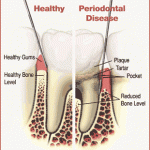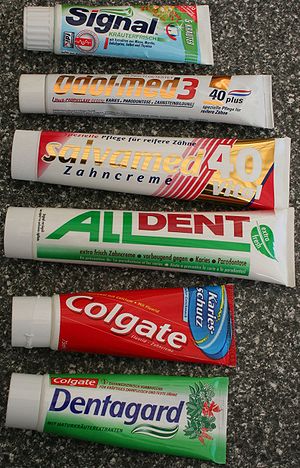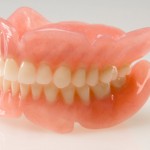Many people have the misconception that primary teeth are not as important as permanent teeth, as the former will eventually be replaced by the latter. This is not true, as primary teeth serve many different functions, some of which contribute to the health and aesthetics of the permanent dentition. For example, they play an important role in chewing food and maintaining space for the eruption of the permanent teeth. Also, like adults, children will feel better about themselves if they have a nice smile, which leads to the development of a social well-being as they grow up.
Caries spread faster in primary teeth because they have thinner enamel, hence it is important that dentition is well-attended to from a young age. Here are some tips that you may find useful in caring for your child’s dentition: Continue reading
Author Archives: Mian
Diabetes and Gum Disease
What is gum disease?
Gum disease is an infection in the gum tissues and bone that keep your teeth in place. There are two types of gum disease, gingivitis and periodontitis.
- Gingivitis is the inflammation of gums caused by bacteria and plaque. This form of gum disease does not include any loss of bone and tissue that hold teeth in place. It is reversible. If left untreated, it can progress to a more severe form, periodontitis, which is irreversible.
- Periodontitis is the inflammation around the tooth. Gums pull away from teeth and form spaces, which become infected as bacteria and plaque spreads. Eventually, the bones, gums and tissue that support the teeth are destroyed. As a result, teeth become loose. Continue reading
9 ways to naturally get rid of bad breath
‘Grab yourself a mint’ or ‘Sit back my friend, your breath is bad!’ is the common things we hear among people suffering from bad breath. Bad breath or halitosis in its medical term occurs due to various reasons; namely poor saliva flow at night resulting in so-called ‘morning breath’ which is repulsive when we wake up, eating pungent foods such as garlic and onions, poor brushing and dental care, sucking on a thumb or other objects and a range of oral diseases. A common misperception is that bad breath arises from the stomach but it actually arises from the back of the tongue where food collects bacteria living in the mouth, they rot and release chemicals throwing out a bad odor. These chemicals are usually volatile sulfur compounds such as hydrogen sulfide. Continue reading
TOP 5 FOODS THAT FIGHT BAD BREATH
Sweet, fresh breath is something that all of us want. Have you then wondered why bad breath is so difficult to combat? Have you invested much of your money in fancy chewing gums, mouth sprays and mouth refresheners that provide only temporary relief from the odor of garlic and other heavy smelling spices after every meal? Does bad breath stand in your way of happiness? It is reported that
there are over 80 million people in the US who suffer from bad breath and an estimated 10 billion dollars are spent by people who seek chemical alternatives to rid themselves of their bad breath as they attempt to spice up their social lives and avoid embarrassment. Continue reading
What is the purpose of toothpaste
Ever tried brushing your teeth without toothpaste? You will be surprised!
Dentifrices – more commonly known as toothpaste, is a type of cleaning medium
which is meant to be used together with a toothbrush to remove soft deposits on tooth surfaces. Formation of soft deposits like dental plaque is inevitable because they are produced by non-harmful bacterial flora which occupies and lives in the mouth of a normal healthy person. In fact, dental plaque provides a suitable habitat for bacteria to multiply and produce acidic by-products which is harmful to our teeth/gums. Hence, the main objective of brushing teeth is to remove such potential harmful cause and
maintain the hygiene of the oral cavity. Continue reading
Permanent Dentures and Alternatives to Permanent Dentures
What are dentures
Dentures are removable, artificial replacements for missing teeth, to maintain oral form, restore function, appearance and health.
There are two main types of dentures:
- Complete Dentures or Full Dentures, and
- Partial Dentures.
For those who have lost some teeth, but don’t want to get dental implants or bridges, partial dentures are an affordable option. Partial denture can be made out of full acrylic or incorporated with cast metal framework. Acrylic partial dentures are more affordable partial dentures. Cast metal partial dentures are usually greater in cost due to laboratory procedure for metal framework. Continue reading
Permanent Dentures replaces lost teeth
PERMANENT DENTURES
There are about 864,000 out of 10.5 million edentulous people are wearing dentures according to NOHSA (2000), National Oral Health Survey. This accumulates up to only 10% out of the actual population who needs denture. Are you amongst the 10% are aware of the importance of wearing dentures or the remaining 10 million who are still in doubt.
THINGS THAT CAUSES LOST TEETH?
When a tooth is lost, in general it is probably due to one of these reasons:
- caries
- gum problems (periodontal diseases)
- trauma or accident
- congenital (e.g.: anadontia, hypodontia)
- supernumerary (extra teeth)
- impacted tooth
Permanent dentures – the Who’s, What’s and Why’s
The first thing that crosses your mind when you hear the word “dentures” would be the image of your gummy grandfather with his fake set of teeth. However with the advancement of today’s technology, anyone can get a denture when necessary and it is not only limited to old people. Dentures are actually part of fixed prosthodontics (placement of artificial devices in the mouth) and they can be removable dentures or fixed dentures (permanent dentures).
What are permanent dentures?
Regain your smile with Permanent Dentures
Dentures are acrylic based material which resembles your gum and teeth. People need dentures due to loss of tooth or teeth. If someone lost one or few teeth, partial denture is required. Full dentures are for those who lost all their teeth. Lower dentures are meant for lower jaw and upper dentures are meant for upper jaw.
From the past, dentures are solely removable. With the advancement of science and research, nowadays, people could have dental implants. That is why permanent dentures are possible.
What is a permanent denture?
With the word permanent, it simply means the denture is not removable. It is fixed to dental implants or your remaining teeth. Sometimes it is also known as fixed bridges.
How to fabricate a permanent denture?
Permanent Dentures and Denture Care
Permanent denture
They are many types of permanent dentures available, the selection of which dictates by patient’s oral conditions and partly, by the patient’s preferences. Generally, there are categorized as:
- Partial Denture – indicated for patients who have loss some of their natural teeth.
- Complete Denture or Full Denture – indicated for patients who have loss all of their teeth.
Complete and partial denture can further be divided into those which are fixed permanently in the mouth and those which can be removed out of the mouth. Example of fixed partial dentures is dental bridges; whereas example of fixed full denture is implant supported complete denture. Of course, a patient could also opt for single or multiple tooth implants as one of the options to restore their esthetic, speech and masticatory (chewing) function. Continue reading




